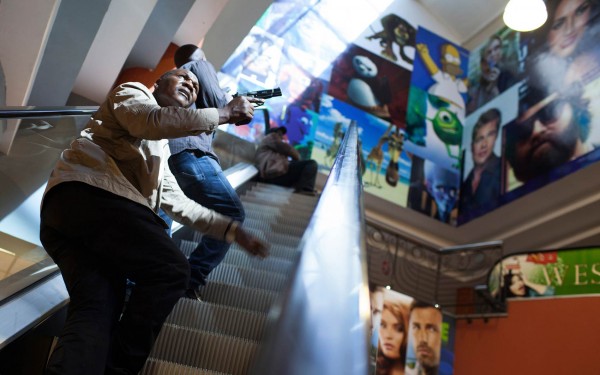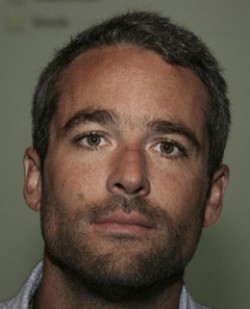
Photo by TYLER HICKS/NEW YORK TIMES
FRESH AIR
A few days after winning a Pulitzer Prize for his photos of a 2013 terrorist attack in a Nairobi mall, Tyler Hicks received an email. It was from one of the women he’d photographed that day — sheltering her two young children on the floor of a cafe. She had heard about the Pulitzer and seen her photo on The New York Times website. “It’s very rare to have access to people in chaotic scenes like this,” Hicks tells Fresh Air‘s Terry Gross. “You take someone’s picture, it’s this amazing scene and then you never find out what happened to them. … I called her and we had a Skype video talk and it was incredible. She showed me her children, a 2-year-old boy and a 10-year-old girl, and told me the whole story: how they laid there for five hours. … They could smell the smoke from the gunpowder and she told me how they got through this.” The attack at Westgate Mall was the work of Islamist extremists, killing more than 65 people and injuring many more. Hicks rushed into the mall after the attack began and took  pictures as events unfolded. Hicks is a photographer for The New York Times and has risked his life many times to cover war and conflict in such places as Kosovo, Chechnya, Congo, Ethiopia, Sudan and Iraq. He first went to Afghanistan after the Sept. 11 attacks and has returned every year since. The Pulitzer citation commends his skill and bravery. Hicks was held captive in Libya for nearly a week, along with three other journalists, including New York Times reporter Anthony Shadid. Less than a year later, Hicks and Shadid sneaked over the Turkish border to cover the civil war in Syria. Later, as they tried to sneak out of Syria, Shadid died of a severe asthma attack, and Hicks, who was in shock, had to figure out how to get Shadid’s body back across the border into Turkey. MORE
pictures as events unfolded. Hicks is a photographer for The New York Times and has risked his life many times to cover war and conflict in such places as Kosovo, Chechnya, Congo, Ethiopia, Sudan and Iraq. He first went to Afghanistan after the Sept. 11 attacks and has returned every year since. The Pulitzer citation commends his skill and bravery. Hicks was held captive in Libya for nearly a week, along with three other journalists, including New York Times reporter Anthony Shadid. Less than a year later, Hicks and Shadid sneaked over the Turkish border to cover the civil war in Syria. Later, as they tried to sneak out of Syria, Shadid died of a severe asthma attack, and Hicks, who was in shock, had to figure out how to get Shadid’s body back across the border into Turkey. MORE
NEW YORK TIMES: Traveling by his side, I have watched him survive firefight after firefight, and seen him get peppered with dirt and rocks by a bomb that killed another man. I have gently tried to calm Afghan soldiers or police, nominal allies underwritten by the United States, after they threatened to kill him for perceived infractions, once as minor as photographing a pickup truck at a checkpoint that carried, among other things, a veiled woman. The simmering Afghan lieutenant who led that particular campaign against Tyler’s photography practically stalked him for weeks, at each encounter threatening him anew. Tyler apologized repeatedly, and explained his work over countless cups of tea. The negotiations for his safety stopped only when that assignment ended and a helicopter carried us away. (Later, the lieutenant was shot in an ambush in a deep ravine; the Afghan grinder ever wrecking more lives.)
Once, an 82-millimeter mortar round landed beside Tyler, 15 feet away. A Marine with seasoned reflexes shoved him to the ground as it screamed down from the sky. The blast so shook him that he pushed himself up and bolted, groaning and grunting, until he reached me, perhaps 50 feet away, and dove to my feet. A shot deer can sprint 100 yards and hit the dirt dead. Was Tyler still alive? We tore off his shirt and looked for holes, four hands running over his back as he curled up and shouted the nonsense of a frightened, disoriented man. I told him there were no holes, that he had not been hit. He was gasping. He nodded. A few minutes later, while the mortar attack continued, he was composed and dressed again, taking pictures of the semi-conscious Marine who had saved him as medics treated him on a gurney. The only sign of what Tyler had survived was his constantly twitching legs, which bounced whenever he sat, for hours. MORE
